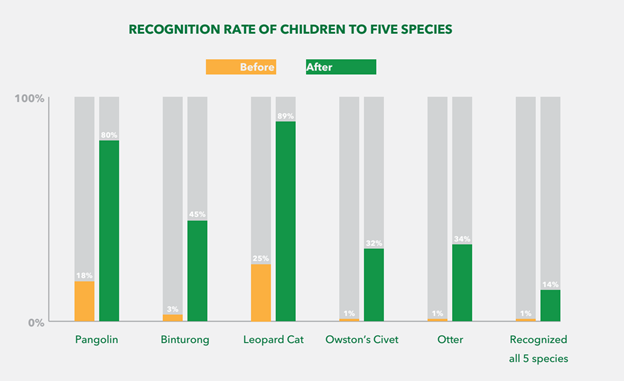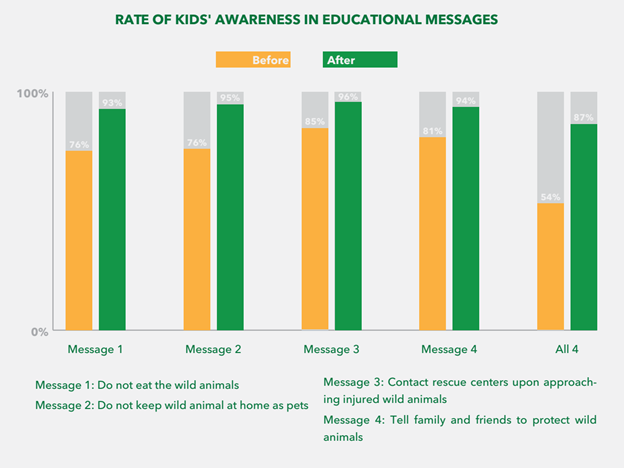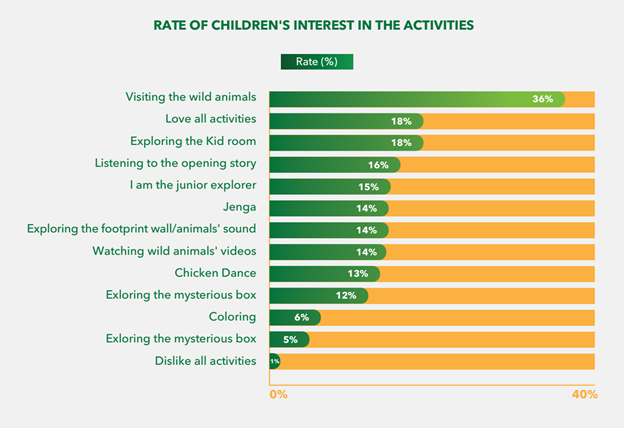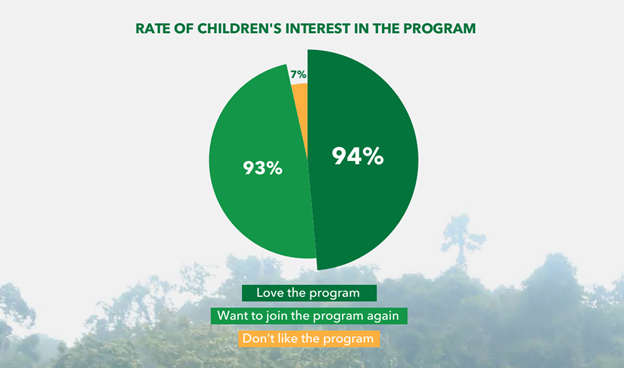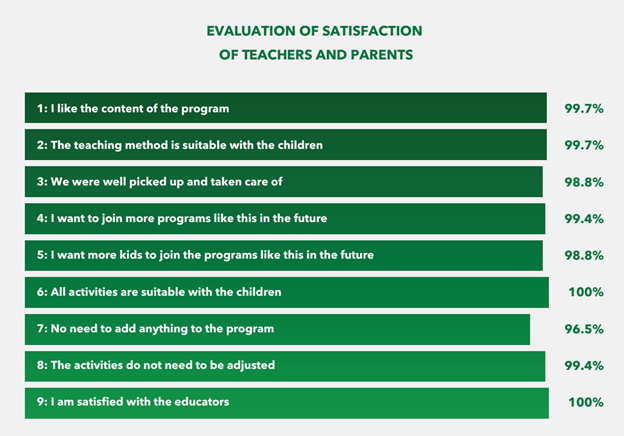The Journey Of “Valuing Nature In Childhood” 2016 – 2019
For the 3-year program report, please download here.
Read the program’s article featured in the Journal of International Zoo Educators Association here (page 13-16).
Read the program’s article featured as a case study for The World Zoo and Aquarium Conservation Education Strategy, issued by The World Association of Zoos and Aquariums and International Zoo Educators Association here (Page 74).
Access the educational materials and publications that we have created for the school programs here.
AIMS
- Fostering children’s love in nature; increasing awareness and shaping positive attitude toward the natural environment and wildlife in Vietnam.
- Spreading the words about conservation education in schools, families and society.
- Being the first step for families, schools and social organizations to well recognize the necessity of natural education activities in children’s development.
- Getting conservation education included in the extracurricular activities at schools.
- Being the connections among families, schools, civil society and conservation organizations in educational natural expedition activities to bring children close to nature.
EDUCATIONAL ACTIVITIES
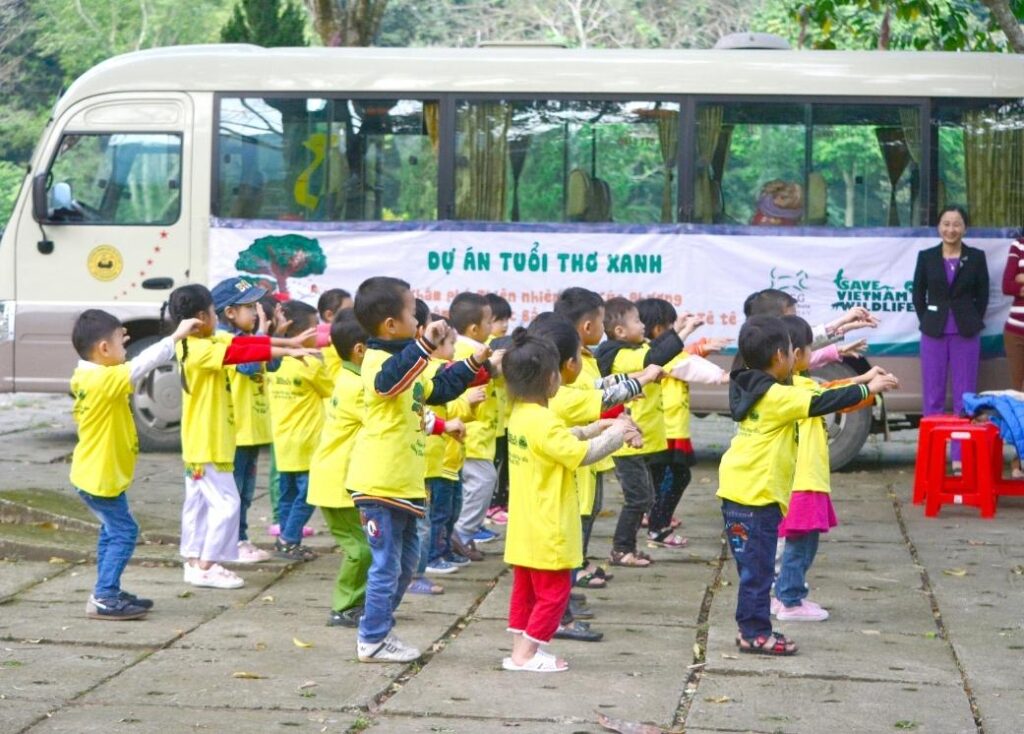
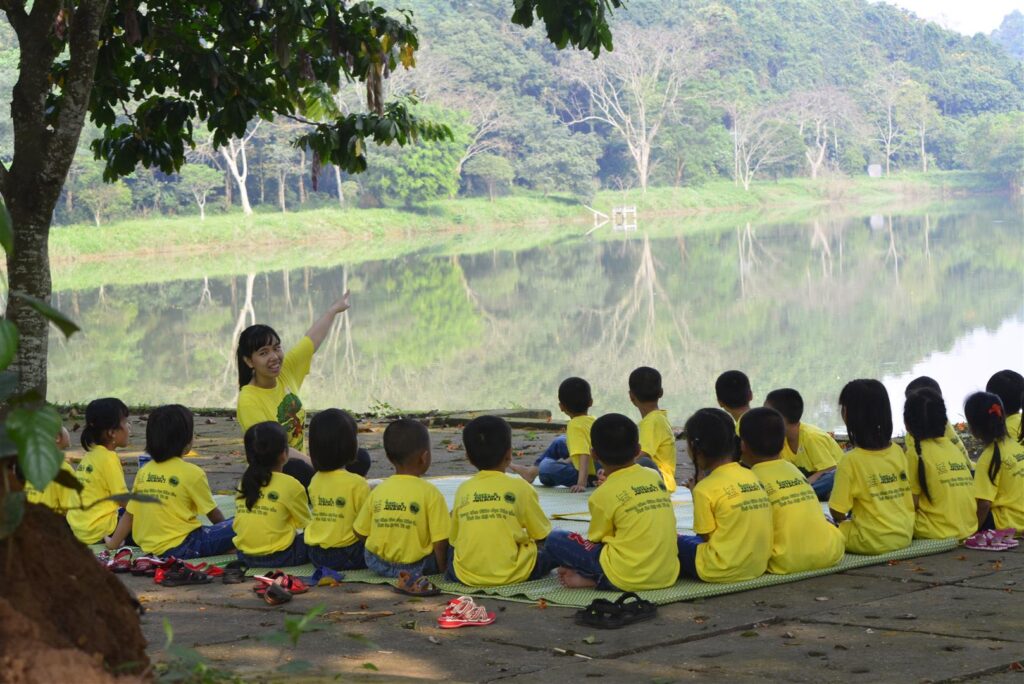
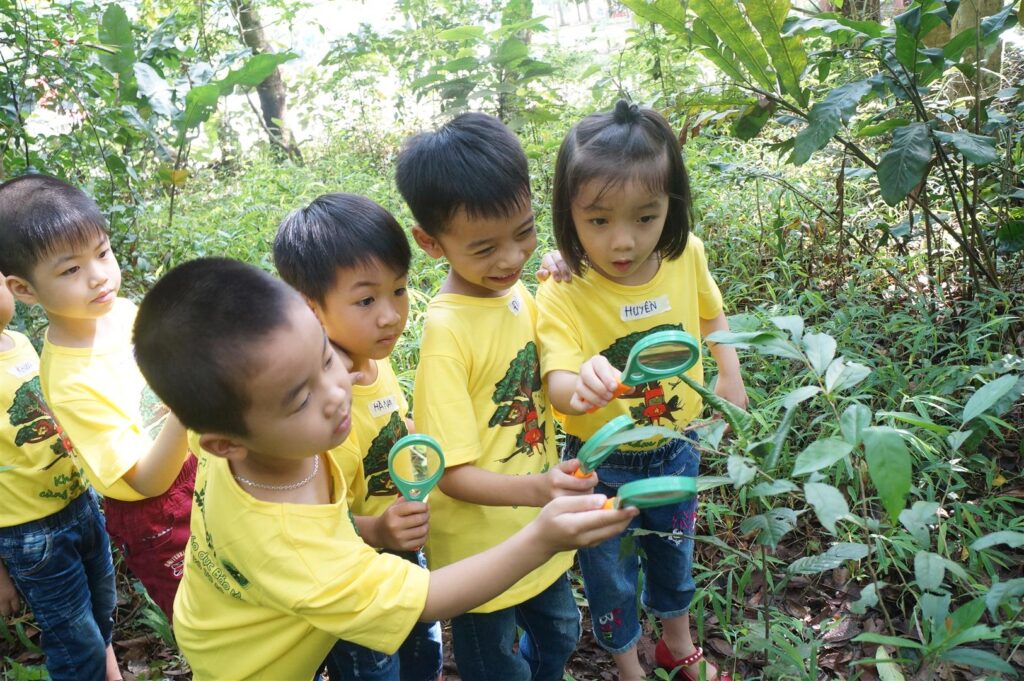
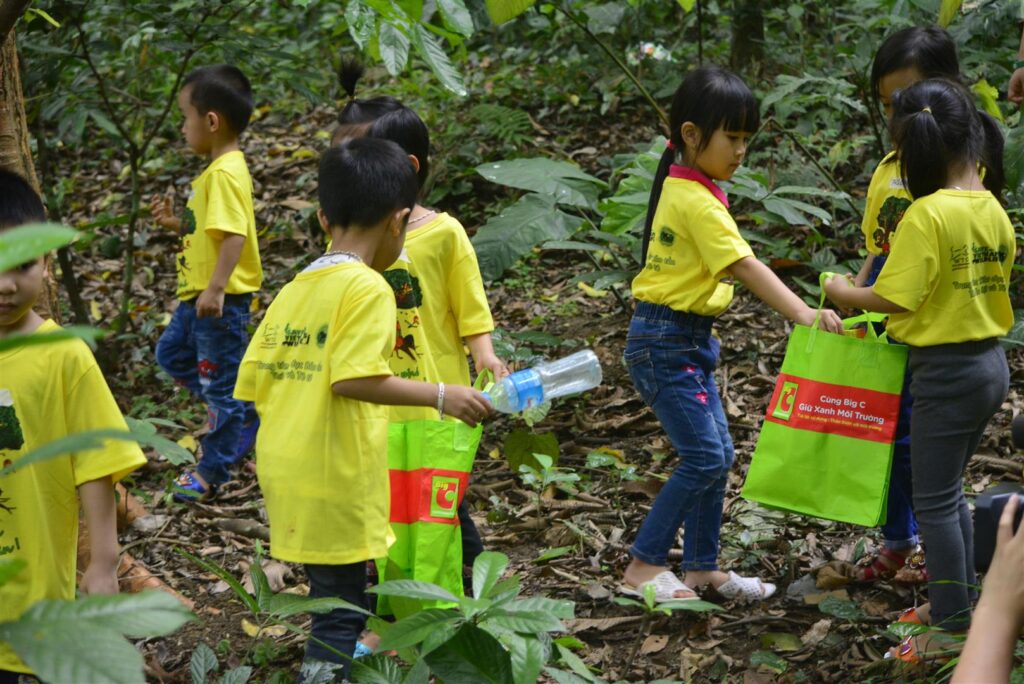
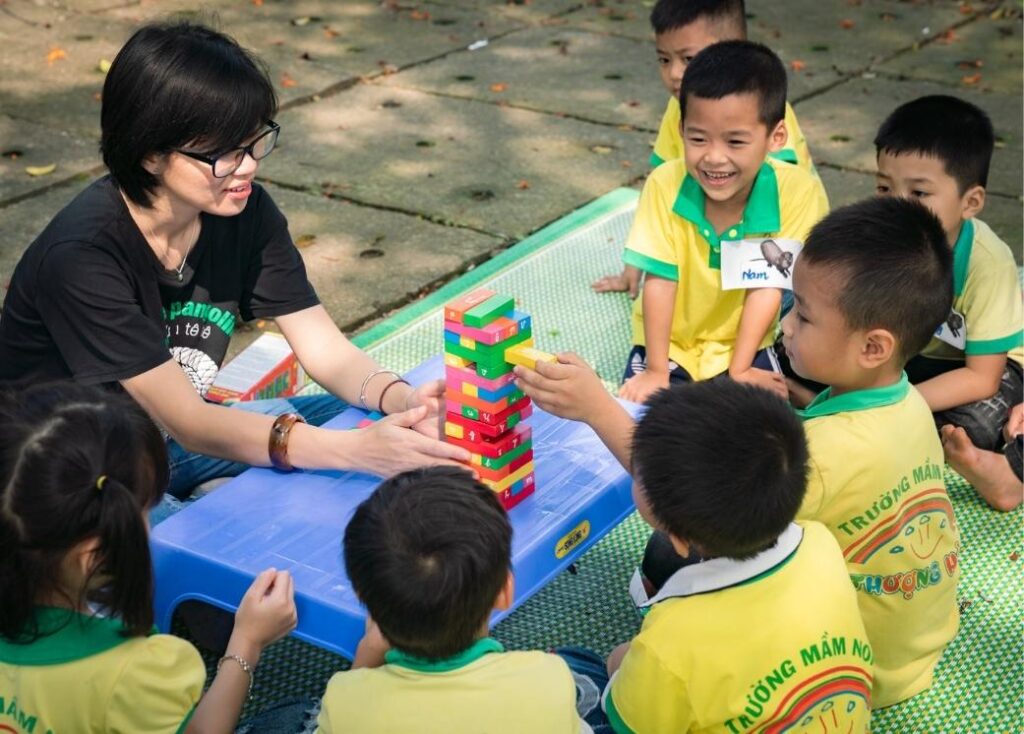
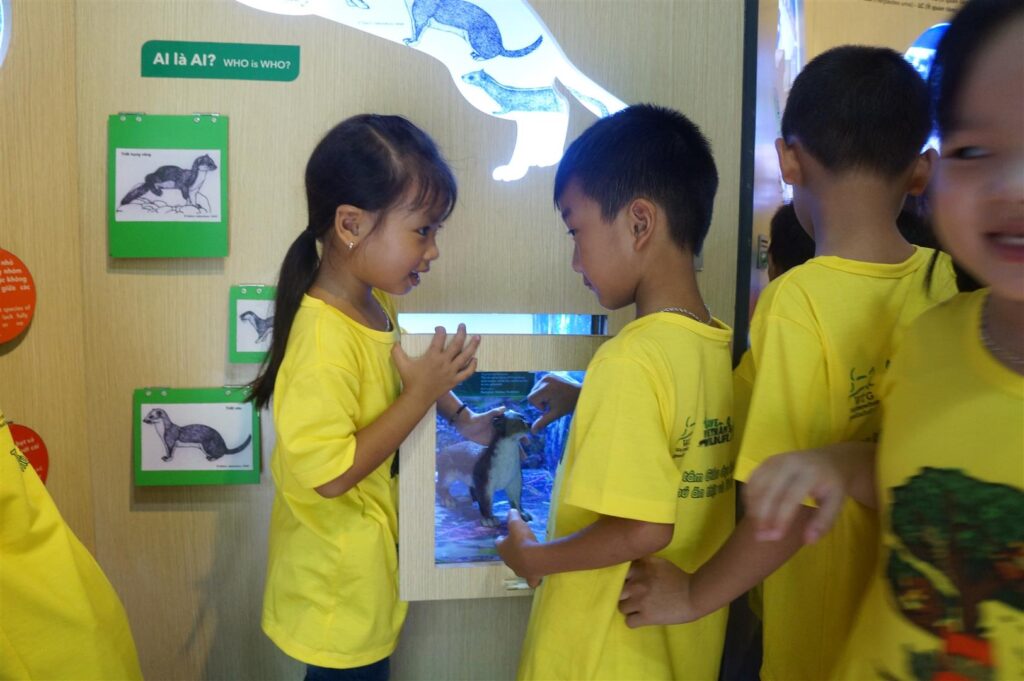
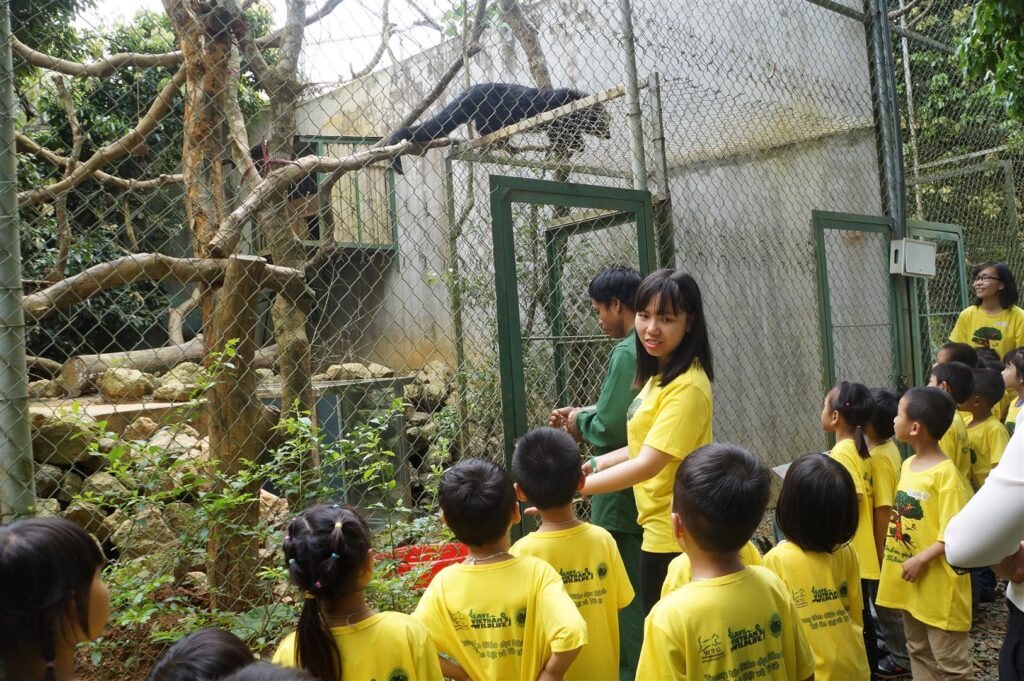
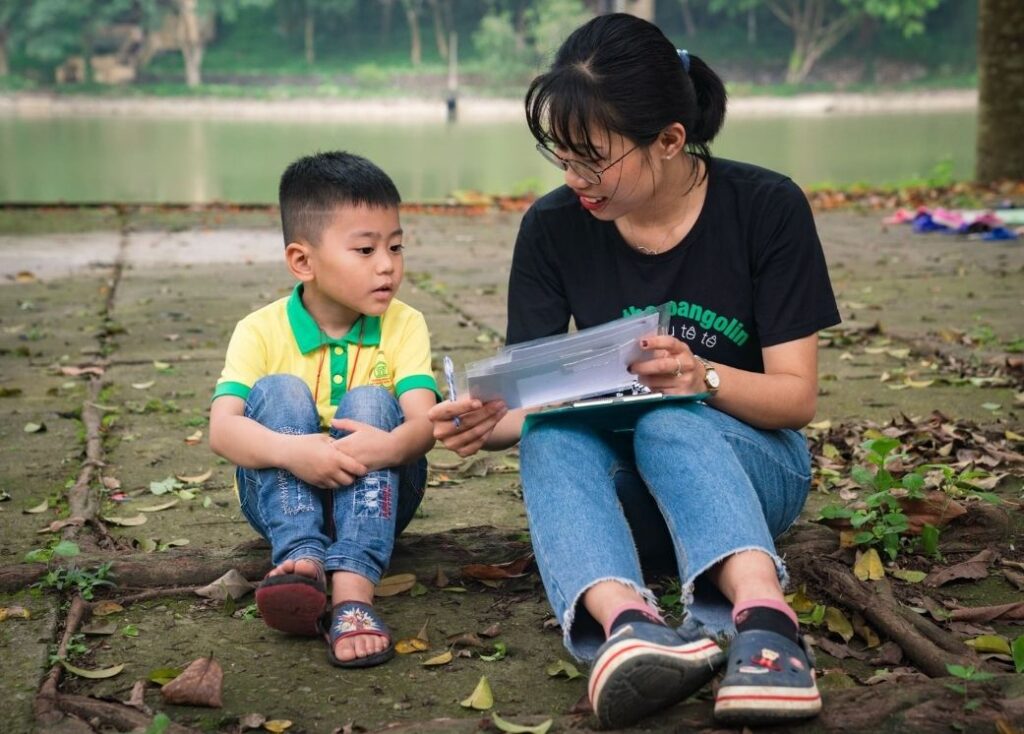
ACHIEVEMENTS
The results of pre and post-evaluation surveys showed that children gain more knowledge about wildlife and have positive changes in awareness and attitudes toward wildlife conservation after the program.
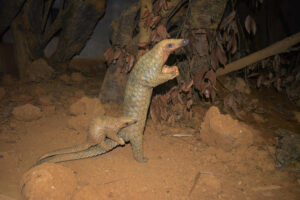
Assessment of their understanding of wild animals showed that the number of children who well-recognized five species (Pangolin, Leopard Cat, Binturong, Owston’s Civet, and Otter) increased dramatically after participating in the program. All species in the program are being researched by SVW so the kids have a chance to approach vivid materials for deeper learning and directly observe the animals in long-term enclosures. For example, in all three years of the program, the recognition rate of Pangolin – the Ambassador animal in the Centre is always the highest among the four other species.
Besides, thanks to the improvement of educational methods over the years, there is an increase in kids’ awareness in the third year of the program. Specifically, Owston Civet’s and Otter’s photos and information were integrated into the stories and other activities of the day so these two species became close and familiar to the kids. In the school year 2018 – 2019, the recognition rate of Otter and Owston’s civet increased 30% after the program (32% and 34% respectively), doubling the previous year’s results.
Furthermore, the educational messages are designed appropriately to suit the preschoolers. There was a high percentage of kids agreeing with the following messages: “Do not eat wild animals”, “Do not keep wild animals as pets”, “Contact the rescue centre upon approaching injured wild animals”, and “Tell family and friends to protect wild animals”.
The Valuing Nature in Childhood Program was built not only to foster children’s love for nature and raise awareness about wildlife, but also to spread the words about conservation to society.
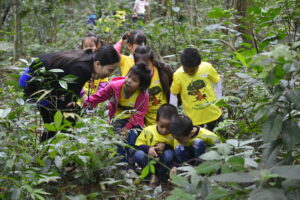
In the one-day trip, the educational messages are cleverly integrated into all activities to help kids remember them longer and deeper. Particularly, the message “Tell family and friends to protect wild animals” always got the highest agreement with an average of 95% in all three years of the program. It can be said that after the program, the children may become the ambassadors to spread the words about wildlife conservation. However, it was difficult for our educators to convey all the knowledge and messages to the children in just one day, and for all the kids to spread the words to their families and friends, especially when their awareness and mind have not fully developed, and it requires the conservation messages to be integrated more and more into the formal curriculum at schools.
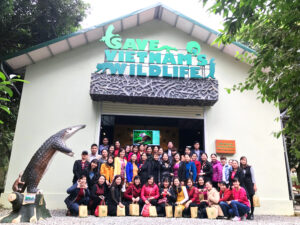
The first year 2016 – 2017 program attracted 1,173 kids from 14 kindergartens, then it expanded to all 28 kindergartens in Nho Quan district, and became the extracurricular activities in the next two years, from 2017 to 2019, thanks to the support from the Education and Training Department of Nho Quan district, kindergartens and families. 99% of teachers and parents wished that the program could open to more children at different ages. 93% of the children said that they wanted to join the following conservation programs like this. We hope that with the socialization of education, and the efforts of families, schools, and society, the Valuing Nature in Childhood Program will continue and become an annual extracurricular activity for the kindergartens in the next following years.
For more children to visit Cuc Phuong National Park and learn about the wild animals in the program, schools can actively register for the program. For the schools in other areas that are far from the Park, Save Vietnam’s Wildlife hopes that other organizations can learn from our methods and apply them locally. The Valuing Nature in Childhood Program is also the stepping stone for us to expand this conservation education model to other ages, areas, and regions in Vietnam.
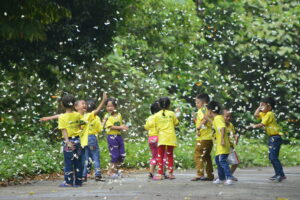
The program has received a lot of positive feedback from schools and families. Most teachers and parents showed their love for the program and wished to join other activities like that in the future. In the school year 2018 – 2019, the Facebook page “Di va Kham pha” was established to connect our conservation activities with schools and families. Thanks to that, the Valuing Nature in Childhood Program has become the connection among families, schools, social and conservation organizations, with educational and natural expedition activities aiming at bringing children close to nature.

